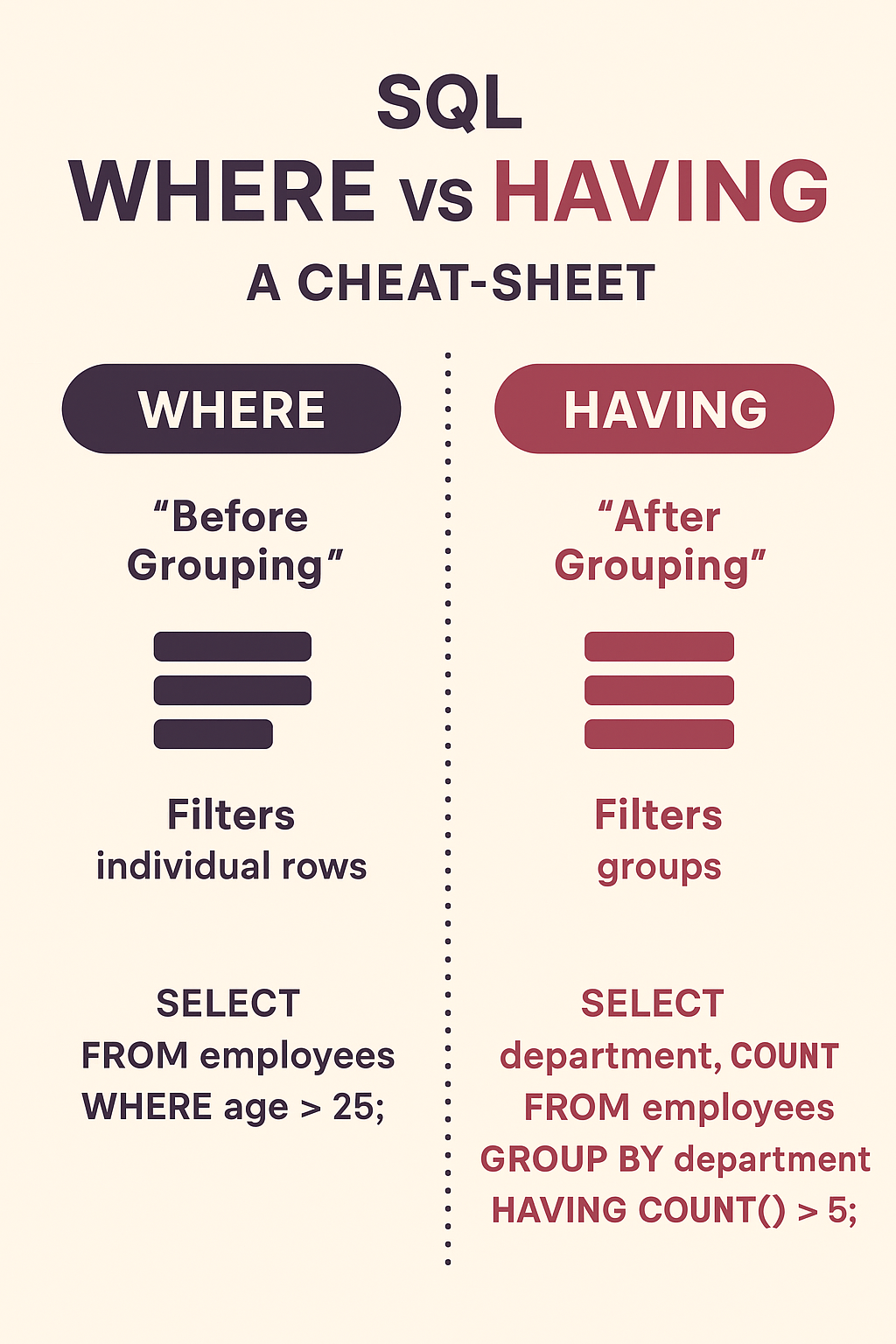Here’s a simple and clear explanation of the difference between WHERE and HAVING in SQL:
Quick Explanation
- WHERE filters individual rows before any grouping occurs.
- HAVING filters groups of rows after aggregation (like
SUM,COUNT,AVG).

Difference Between WHERE and HAVING
| Feature | WHERE | HAVING |
|---|---|---|
| Purpose | Filters rows before grouping (used on individual rows) | Filters groups after grouping (used with GROUP BY) |
| Used With | Any table or query | Only with GROUP BY or aggregate functions |
| Aggregates | Cannot use aggregate functions like SUM(), COUNT() directly | Can use aggregate functions to filter grouped results |
| Execution | Applied first, before grouping | Applied after aggregation/grouping |
| Example | SELECT * FROM sales WHERE amount > 500; | SELECT region, SUM(amount) FROM sales GROUP BY region HAVING SUM(amount) > 5000; |
Example
Using WHERE:
sql
SELECT *
FROM employees
WHERE salary > 50000;
Returns employees with salary > 50,000.
Works on individual rows.
Using HAVING:
sql
SELECT department, AVG(salary) AS avg_salary
FROM employees
GROUP BY department
HAVING AVG(salary) > 60000;
Returns only departments where average salary > 60,000.
Works on grouped results, not individual rows.
Tip to remember:
- Use WHERE for filtering rows before aggregation.
- Use HAVING for filtering after aggregation.
Memory Trick
Think of it like a “Filter Timing”:
- WHERE → “Before Grouping”
- Filters individual rows before they are grouped.
- Mnemonic: “Where the row goes” → decides which rows enter the group.
- HAVING → “After Grouping”
- Filters groups after aggregation.
- Mnemonic: “Having the group pass?” → decides which groups stay.
Quick Visual
Data Rows → WHERE filters rows → GROUP BY → HAVING filters groupsTip: If you are using SUM, COUNT, AVG, think HAVING.
If checking a single column value, think WHERE.